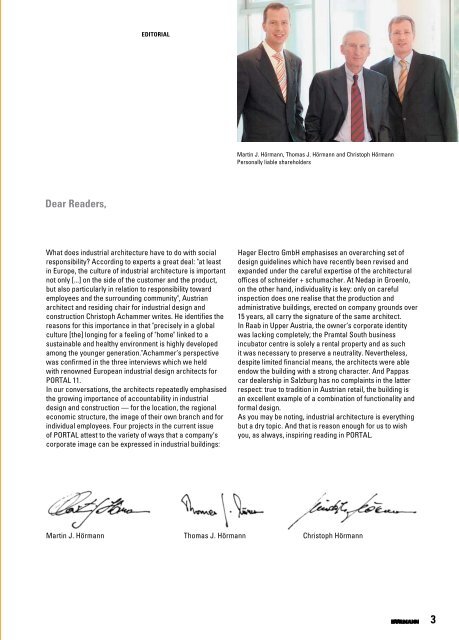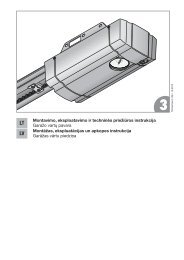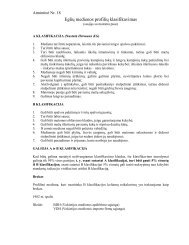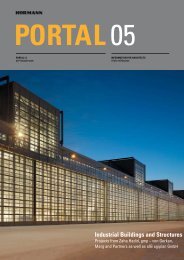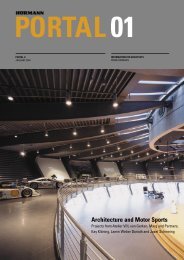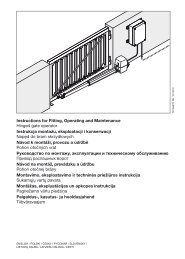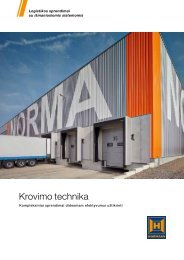Download as PDF - Garage doors
Download as PDF - Garage doors
Download as PDF - Garage doors
You also want an ePaper? Increase the reach of your titles
YUMPU automatically turns print PDFs into web optimized ePapers that Google loves.
EDITORIAL<br />
Martin J. Hörmann, Thom<strong>as</strong> J. Hörmann and Christoph Hörmann<br />
Personally liable shareholders<br />
Dear Readers,<br />
What does industrial architecture have to do with social<br />
responsibility? According to experts a great deal: "at le<strong>as</strong>t<br />
in Europe, the culture of industrial architecture is important<br />
not only [...] on the side of the customer and the product,<br />
but also particularly in relation to responsibility toward<br />
employees and the surrounding community", Austrian<br />
architect and residing chair for industrial design and<br />
construction Christoph Achammer writes. He identifies the<br />
re<strong>as</strong>ons for this importance in that "precisely in a global<br />
culture [the] longing for a feeling of "home" linked to a<br />
sustainable and healthy environment is highly developed<br />
among the younger generation."Achammer‘s perspective<br />
w<strong>as</strong> confirmed in the three interviews which we held<br />
with renowned European industrial design architects for<br />
PORTAL 11.<br />
In our conversations, the architects repeatedly emph<strong>as</strong>ised<br />
the growing importance of accountability in industrial<br />
design and construction — for the location, the regional<br />
economic structure, the image of their own branch and for<br />
individual employees. Four projects in the current issue<br />
of PORTAL attest to the variety of ways that a company‘s<br />
corporate image can be expressed in industrial buildings:<br />
Hager Electro GmbH emph<strong>as</strong>ises an overarching set of<br />
design guidelines which have recently been revised and<br />
expanded under the careful expertise of the architectural<br />
offices of schneider + schumacher. At Nedap in Groenlo,<br />
on the other hand, individuality is key: only on careful<br />
inspection does one realise that the production and<br />
administrative buildings, erected on company grounds over<br />
15 years, all carry the signature of the same architect.<br />
In Raab in Upper Austria, the owner‘s corporate identity<br />
w<strong>as</strong> lacking completely; the Pramtal South business<br />
incubator centre is solely a rental property and <strong>as</strong> such<br />
it w<strong>as</strong> necessary to preserve a neutrality. Nevertheless,<br />
despite limited financial means, the architects were able<br />
endow the building with a strong character. And Papp<strong>as</strong><br />
car dealership in Salzburg h<strong>as</strong> no complaints in the latter<br />
respect: true to tradition in Austrian retail, the building is<br />
an excellent example of a combination of functionality and<br />
formal design.<br />
As you may be noting, industrial architecture is everything<br />
but a dry topic. And that is re<strong>as</strong>on enough for us to wish<br />
you, <strong>as</strong> always, inspiring reading in PORTAL.<br />
Martin J. Hörmann<br />
Thom<strong>as</strong> J. Hörmann<br />
Christoph Hörmann<br />
3


